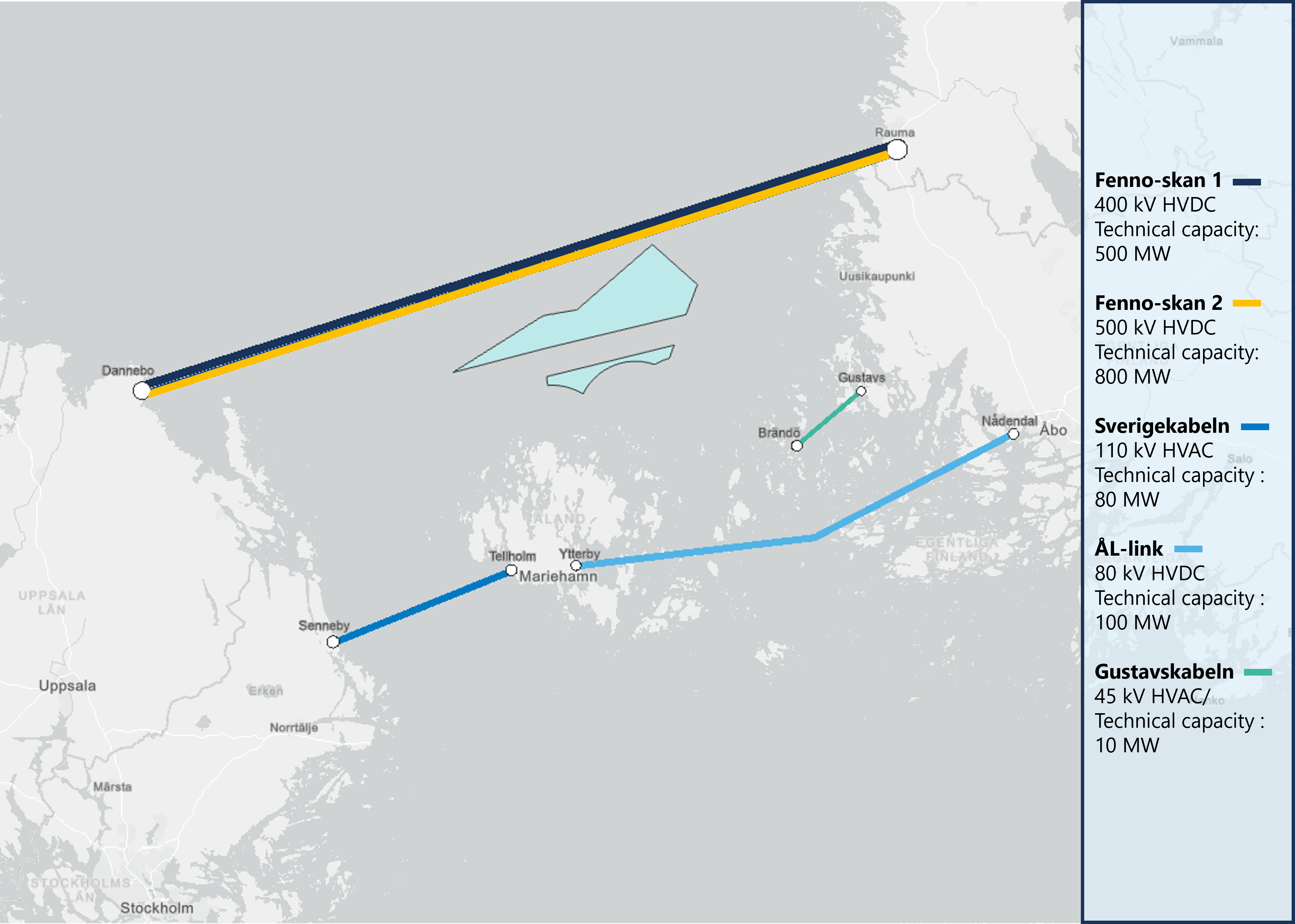Electricity Market and Pricing
Europe is divided into electricity market areas where the electricity price is determined separately for each market. Åland is mainly connected to the Swedish electricity market area SE3 for the import of electricity that is not locally produced. The electricity price is influenced by several factors, such as transmission capacity in the power grids, production costs for different methods of generation, operational disturbances, and more. The market price is a balance between supply and demand, which is influenced by the factors mentioned above. Consumers can choose either a fixed price or a spot price for electricity in agreements with electricity suppliers, with the spot price being determined on the Nord Pool spot price market.
Connection Possibilities
Åland is located between two markets with growing energy needs, which provides the Sunnanvind project favorable conditions for energy exports. The distance from the northern energy areas to the Finnish mainland is approximately 75 km, and to Sweden it is 130 km.
The figure illustrates two HVDC (high-voltage direct current) grid cables north of the energy areas, Fenno-Skan 1 and 2 (500+800 MW), which transmit electricity between Finland and Sweden. Åland is connected to Sweden via the so-called Sverigekabeln (HVAC alternating current cable, 80 MW), and to Finland via ÅL-link (HVDC, 100 MW) and Gustavskabeln (HVAC, 10 MW).
Despite the excellent geographical location of the energy areas, the connections to both the Finnish and Swedish grid networks are unresolved issues. The grid companies Fingrid and Svenska Kraftnät face challenges in expanding the grid fast enough to accommodate the electricity production from all of the planned initiatives. However, the expansion of the grid networks is an ongoing process in both countries.




